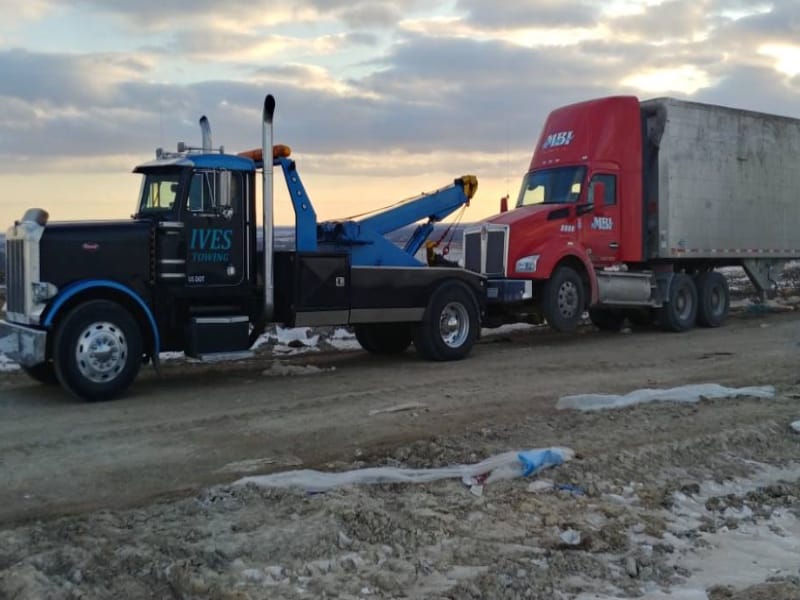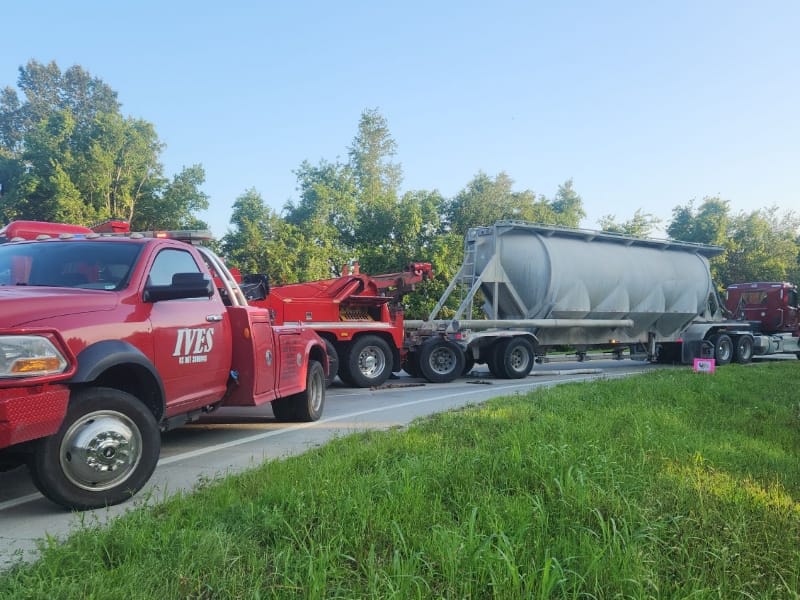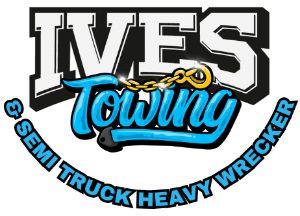When Something’s Not Adding Up
In our I-44 heavy recovery work, every job starts with numbers. When those are ignored, the risks grow fast. A tow becomes more complicated and damage more severe: wreckers tip from trying to lift beyond their rating. Straps snap mid-recovery from misjudged load weight. A rig overloaded by just a few thousand pounds can break down under that pressure. Equipment fails, and traffic backup worsens. Many of these accidents are the result of poor math. That’s why towing capacity is the first calculation that guides how we respond.

What Towing Capacity Really Covers
Every vehicle has a maximum tow rating. Pushing past that increases braking distance, strains drivetrains, and risks mechanical failure. These are the main ratings we use to size up a job:
- GVWR (Gross Vehicle Weight Rating): Max allowable weight of the vehicle, including cargo.
- GCWR (Gross Combined Weight Rating): Max weight of the vehicle and whatever it’s pulling.
- Tongue Weight: The amount of downward force on the hitch.
We calculate these before we send a unit. On any I-44 heavy recovery, we factor in slope, surface, and weather before deciding which recovery vehicle to use. If these numbers don’t align, the load becomes unstable. An unbalanced trailer can sway or shift during transport. Overloaded axles lead to heat buildup and brake failure. Misjudging tongue weight makes the tow setup harder to control at highway speeds.
Recovery Requires Clear Planning
We calculate every aspect of a recovery scene. That includes the weight of the load, how it’s positioned, and how it may shift during towing. We check for load distribution issues and hitch stress. Matching the wrong truck to the job causes gear failure. We don’t leave that to chance.
Common Results of Ignoring Capacity Limits
When capacity numbers get ignored, damage follows:
- Jackknifed trailers on wet pavement.
- Haulers with bent frames.
- Trucks with burned-out transmissions.
- Cargo spilled from collapsed hitches.
Our Math Starts Before We Roll Out
Before we dispatch, we ask for cargo type, vehicle make, and estimated weight. We study location, traffic volume, and surface conditions. Based on that, we select the right recovery truck, winching system, and rigging approach.
This preparation lets us work with control. It reduces the risk of damage and cuts down recovery time. Every I-44 heavy recovery we take on is grounded in this kind of planning. We don’t improvise after arriving, we show up with a plan that fits the job. That means fewer surprises and safer recoveries. We adjust our strategy if road grades or weather shift the load dynamics. Nothing gets overlooked: not the gear, the angle, or the pressure points.

I-44 Heavy Recovery: Ives Towing Handles It With Numbers First
Our I-44 heavy recovery team relies on weight data, truck specs, and real-world field experience. Our crew has worked recoveries involving cement mixers, RVs, loaded box trucks, and tractor-trailers. Each one required specific calculations to move safely.
Towing capacity defines the boundaries of the job. Ignoring it leads to delays and risk. At Ives Towing, we keep the focus where it needs to be: on the math. That’s how we manage I-44 heavy recovery without error.
